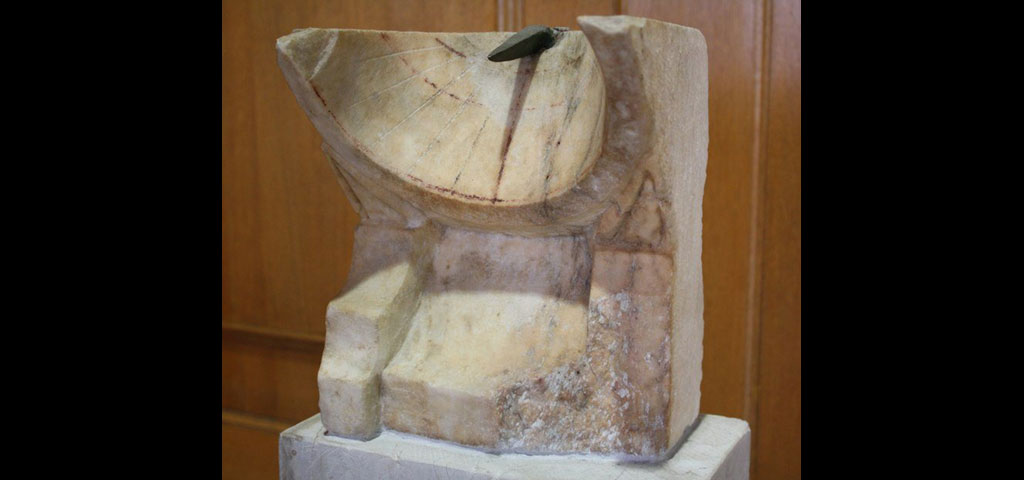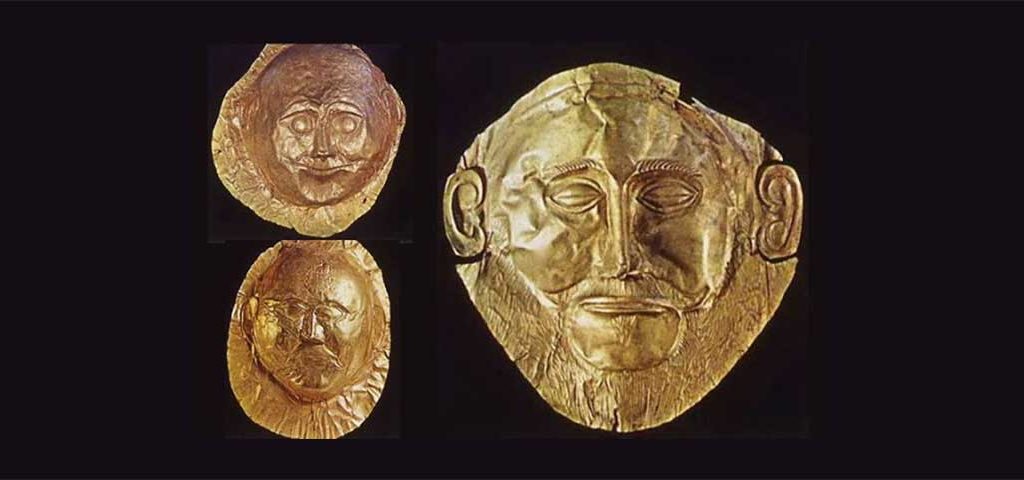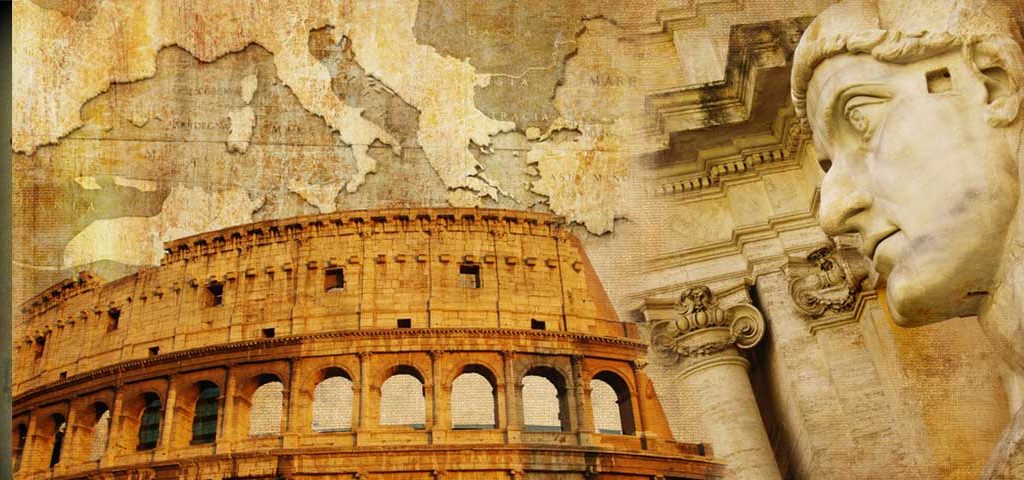Katsikis Dimitrios
the Artist
Demetrios Katsikis is an Athenian-based metal artist widely known as “the modern Hephaestus”. He graduated from the Agricultural University of Athens (department of Agricultural Biotechnology) and he holds a MSc from the Wageningen University of the Netherlands.
His strong inborn passion with Greek art and culture and military technology inevitably guided him to work with metal, in an attempt to ‘resurrect’ the first Greek school of armouring of modern times.
Inspired by the depth and richness of Greece’s cultural background he started from scratch (self taught) and after a few years was able to recreate a rich variety of protective military gear ranging from the 15thcentury BC to the 15th century AD. The unique panoplies created from his exemplary work are classics of the Trojan war, bell and muscled cuirasses and linen linothorax of the Classical Greek period and later period armour of the Military Saints of the Eastern Roman Empire.
His work combines in-depth research through archaeological findings, academic papers, pictorial representations, wall frescoes, paintings, pottery and philological sources with traditional raising techniques (hammering) to recreate authentic suits of armour. His artifacts cover armour styles from the Mycenaean Bronze Age to the Late Eastern Roman era. Materials commonly used in his artwork are bronze and iron sheets, bronze and silver castings, linen and silk fabrics, wool, leather, wood,
natural horns and horse tails.
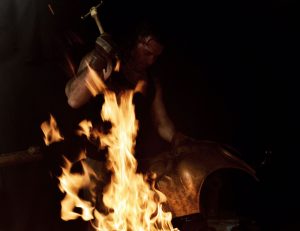
It is not easy to gauge the actual significance of armour in a historical, military and religious context throughout Greek history. What is a fact is that these artifacts have had a role to play in the progress of Greek civilization throughout three millennia. Homeric heroes, gods, Athenian and Spartan hoplites, divine Hellenistic hegemons, powerful Roman emperors, imposing Orthodox military saints have all been represented in art donning impressive, heavy panoplies. Such artistic examples (pottery, sculptures, paintings etc.) span from the Black Sea, southern Italy, North Africa, the Middle East and Asia Minor to as far as western India (Gandhara Art). For example, the Athenian muscled cuirass (5th century BC) can be considered as the most iconic suit of armour of the Western world.
In May 2010, Demetrios Katsikis, exhibited his artistic work at the Museum hall of the Dumbarton Oaks Museum and the research library (Τrustees of Harvard) during the ongoing Internationalrustees of Harvard) during the ongoing International Symposium, Μilitary Men in Byzantium, Emperors, Saints, and Soldiers at Arms, ilitary Men in Byzantium, Emperors, Saints, and Soldiers at Arms, at the invitation of the museum curator, Ms Gudrun Buhl and the co-organizer, renowned professor Jon Haldon (Professor of History and Hellenic Studies at Princeton University). Following this, he pursued further his research and work to recreate panoplies from all the distinctive cultural phases of Greece spanning over 3500 years. His work is widely accepted and he has attracted international acclaim by participating in international documentaries/series on Ancient Greek themes. Today, he continues to collaborate with various researchers and museums.
He lives and creates in Athens and likes to repeat again and again the following quote:
The historical, military and religious role of the armors to the Greek past it is very difficult to be estimated to its pragmatic dimensions, these very artifacts have deep stigmatized the route and the stream of the Greek civilization throughout three millennia. Homeric Heroes, Gods, Athenian and Spartan hoplites, holly Hellenistic Hegemons, powerful Roman Emperors, imposing Orthodox Military Saint have been represented bearing heavy impressive armors. An expert eye can detect Greek style armors in various means of artistic expressions (pottery, sculpturing, painting etc.) from Euxine Ponto, to South Italy, to North Africa, to Middle East &Asia Minor and far to the Western India (Gandhara Art). The Athenian muscle cuirass (5th century BC) should be considered by far the most influential body armor of the Western hemisphere.
The last four years he has been working closely with photographer-photojournalist Dimitrios Karvountzis to make the best photographic imprint of the demanding work.
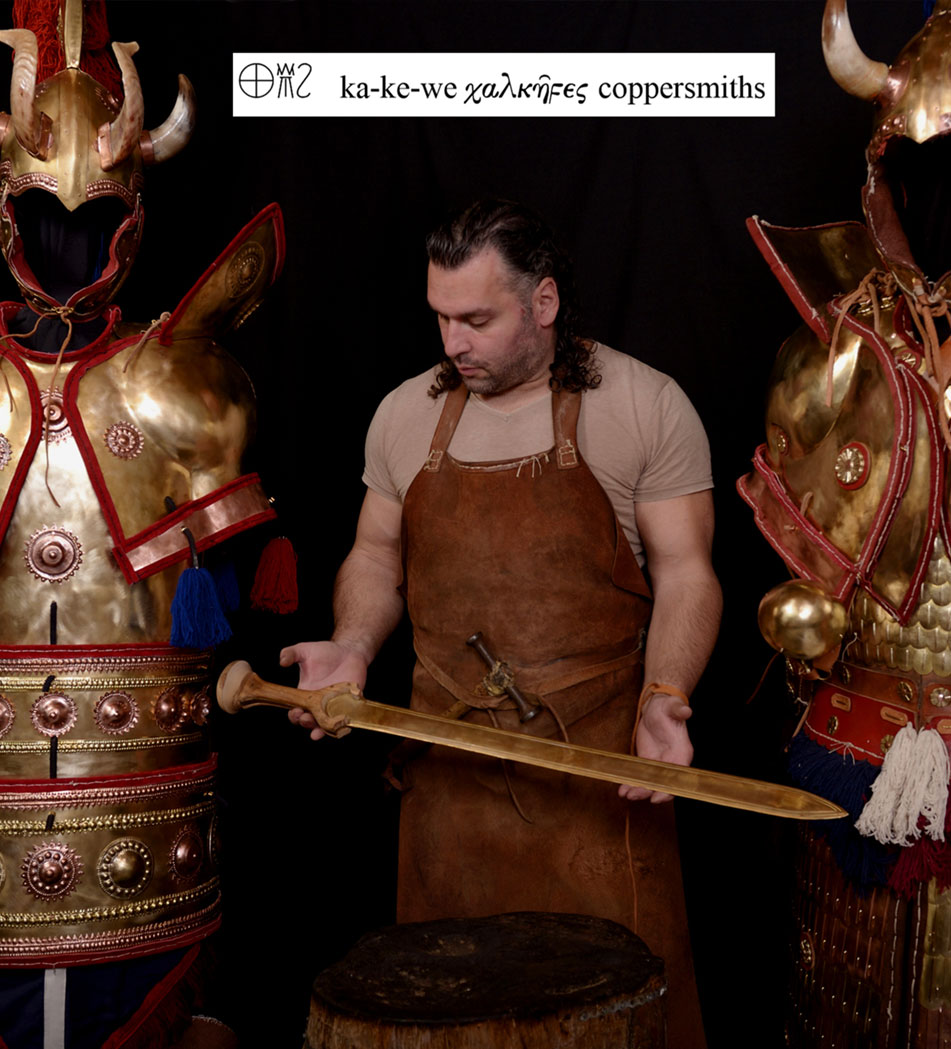
Νotable references
Dimitrios Katsikis is a very talented artist, his bronze land leather awesome reconstructions of ancient Greek land Roman-Byzantine military equipment are made with great skill. His pieces are based as much as possible on archaeological elements and reproduced with high accuracy and professionalism. The reproducted weaponry maintain their functionality and can be used as re-enactment as well as historical/archaeological display purpose.
Dimitrios Katsikis is a talented artist and researcher who produces hand-crafted armor that is historically accurate. His armors are not only beautiful pieces of art, but constitute significant contributions to scholarship on ancient warfare. The insights that Dimitrios has gained though his practical hand-on, experience reconstructing ancient armor has been of great aid to my own research as well as that of other academics, and I look forward to his future projects.
The talent of Dimitrios Katsikis does not need to be described. It is enough to look at his reconstruction to understand how he is able to bring back to life the art of the ancient armoury craftmanship of the Greco-Roman world. His works are not replicas, but authentic armours which show the brightness and the power of the ancient and medieval warriors, their care about efficiency and effectivity but, in the same time, their love for the estetic and the beauty, also in the military accoutrement. The works of Dimitrios deserve a world-wide exposition. I am trying to organize it in occasion of the next archaeological exhibition, to show these artworks to the lovers of the true history and archaeology.
Byzantine armour and weapons did not survive in sufficient number and this is a subject of scholarly debate. In his reconstructions, Dimitris Katsikis accurately follows academic theories and visualises the lost heritage of the Middle Ages.
